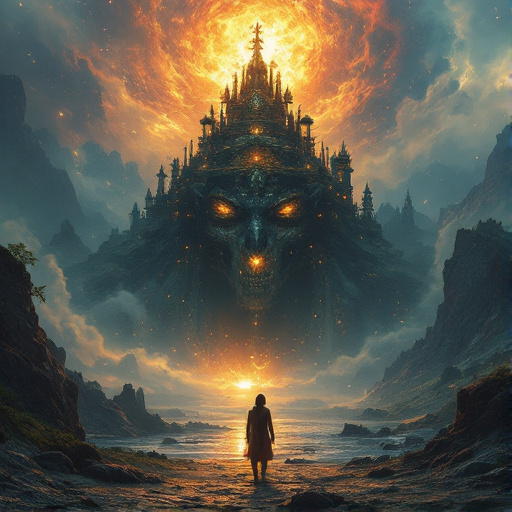Featured Articles
- 7 Best Portable Water Purifiers for Exotic Destinations Tested and Ranked for Ultimate Travel Safety
- Chasing the Unseen: Discovering the World's Most Mysterious and Controversial Hidden Paradises
- Discovering the Untamed: The Hidden Ecotourism Gems of Southeast Asia's Forgotten Islands
- Discovering the World's Hidden Fractals: Unveiling Exotic Destinations Through Nature's Patterns
- "Lost in Translation: Exploring the World’s Strangest Travel Customs in Exotic Destinations"
Top 8 Innovative Travel Gear Launched in the Last 5 Years for Exploring Remote, Off-the-Grid Destinations
Top 8 Innovative Travel Gear Launched in the Last 5 Years for Exploring Remote, Off-the-Grid Destinations
Top 8 Innovative Travel Gear Launched in the Last 5 Years for Exploring Remote, Off-the-Grid Destinations
1. The BioLite FirePit 2 – Portable Eco-Friendly Campfire
The BioLite FirePit 2 has revolutionized campfire experiences for off-grid travelers. Launched in 2018, this portable wood-burning campfire doubles as a camping stove with a fan to improve combustion efficiency. It reduces smoke output by up to 95%, making it ideal for eco-conscious adventurers seeking a cleaner fire.
Its compact design folds flat for easy transport, while providing up to 3.5 hours of burn time on one set of fuel. The FirePit 2 is also equipped with a USB charging port powered by the fire’s heat, offering a practical way to charge small devices in remote areas.
Reviewed by OutdoorGearLab and praised for its combination of portability and sustainability, the BioLite FirePit 2 is perfect for those exploring areas where traditional campfires are discouraged or prohibited (OutdoorGearLab, 2021).
2. The LifeStraw Flex – Advanced Water Purification System
Water purification is often a critical concern when venturing off-grid. The LifeStraw Flex, released in 2019, is an innovative water filter capable of removing bacteria, parasites, microplastics, and even harmful chemicals from various water sources. It combines hollow fiber technology with activated carbon filtration for versatility.
This device is lightweight and portable, performing efficiently for up to 1,000 liters of water. Users can drink directly through the straw or use the included hydration bag, which is especially useful when filling from unpredictable or murky water sources in remote locations.
Endorsed by survival experts and field researchers alike, the LifeStraw Flex ensures reliable hydration and safety for travelers diving into rugged, off-the-grid environments where clean water is scarce (LifeStraw, 2020).
3. The KerSolar KSR150 – Solar-Powered Portable Refrigerator
Cooling food and medicines is a huge challenge for remote expeditions. The KerSolar KSR150 emerged onto the market in 2020 as a 12-liter solar-powered portable fridge/freezer ideal for off-grid use. It operates fully on solar energy, allowing users to preserve perishables without relying on power stations or fuel.
This compact system includes integrated solar panels and offers multiple temperature modes, ensuring flexibility for different contents. Its rugged construction suits rough travel conditions, making it a favorite among scientific researchers and adventure tourists alike.
The combination of portability, renewable energy use, and reliable cooling capacity has made the KSR150 a leading product in sustainable travel tech, opening new possibilities for extended stays in remote areas (KerSolar, 2021).
4. The Garmin inReach Mini 2 – Satellite Communication Device
The launch of Garmin’s inReach Mini 2 in 2021 marked a significant advancement for communication in off-grid travels. This compact satellite messenger enables two-way text messaging, SOS emergency signaling, and GPS tracking anywhere worldwide without cellular service.
Its small form factor and long battery life appeal to minimalists and hardcore explorers alike, providing peace of mind by maintaining connectivity even in the most isolated regions. The device integrates with smartphone apps, enhancing usability and trip planning.
Experts in remote travel recommend the inReach Mini 2 as an essential piece of safety gear. Its satellite network coverage and reliability have saved countless lives during expeditions where traditional communication fails (Garmin, 2022).
5. The Onewheel GT – All-Terrain Electric Vehicle
Unveiled in 2021, the Onewheel GT offers a unique mode of transport for rugged, off-grid terrain. This self-balancing electric skate-like vehicle comes with extended range and enhanced stability compared to earlier models, allowing explorers to cover ground quickly over rough trails.
Its sizeable, wide tire and adaptive suspension handle sand, rocks, and uneven surfaces, making it practical for last-mile travel that’s difficult by foot or traditional bicycles. The Onewheel GT recharges via standard outlets but travels over 20 miles on a single charge.
Though not a replacement for backpacks or traditional gear, this innovation enables faster exploration of remote areas, opening new opportunities for adventurers who want to blend technology with off-grid experiences (Onewheel, 2021).
6. The Nomad Lane Bento Bag – Modular Packing System
Packing light and organized remains a challenge for remote travelers. The Nomad Lane Bento Bag, launched in 2022, addresses this with a highly modular, customizable packing cube system designed specifically for off-the-grid expeditions. It maximizes space while keeping gear accessible.
The Bento Bag’s water-resistant materials and durability withstand harsh environments, while its smart compartment layout accommodates electronics, toiletries, clothing, and essentials separately. Its compact form fits easily inside larger backpacks without bulking.
Travel bloggers and minimalist packers praise the Bento Bag for easing the complexities of long-term travel where resupply may be limited, proving that efficient organization can enhance independence off the beaten path (Nomad Lane, 2022).
7. The BioLite SolarHome 620 – Off-Grid Lighting and Power Station
BioLite’s SolarHome 620, introduced in 2019, combines solar charging with integrated LED lighting and USB power output, transforming how remote travelers illuminate campsites and power devices without generators. The system includes a portable solar panel, rechargeable battery, and multiple lights.
This all-in-one setup supports up to 10 days of light per full charge and powers small tech devices such as smartphones and cameras, making it a sustainable and low-maintenance choice for extended stays. Its weather-resistant design further boosts reliability outdoors.
Humanitarian organizations and remote workers have adopted the SolarHome 620 widely, while adventurers appreciate its simplicity and environmental sensitivity, ensuring consistent power even far from traditional sources (BioLite, 2020).
8. The GoTenna Mesh – Off-Grid Smartphone Communication Network
One of the biggest hurdles in remote areas is the lack of cellular networks. Released in 2019, the GoTenna Mesh device creates decentralized communication networks by linking multiple units via radio waves. Users with smartphones can text, share locations, and send emergency messages without cell towers.
Designed to work in groups, the GoTenna Mesh extends communication range across miles of wilderness and enhances safety for teams or solo travelers who refuse to be out of reach. Its pairing with an easy-to-use app simplifies operation for non-technical users.
Emergency responders and remote trekkers alike have found the GoTenna Mesh invaluable. It is frequently cited in adventure forums as an innovative solution for maintaining contact in the absence of conventional service (GoTenna, 2019).




